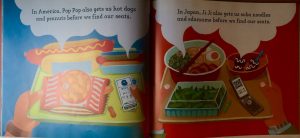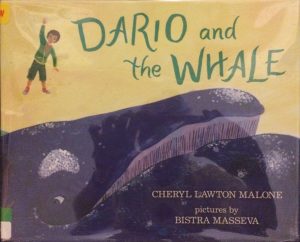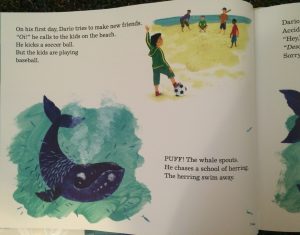![2016-05-13_14.07.28[1]](https://blogs.iwu.edu/lrbmt2016/files/2016/05/2016-05-13_14.07.281-300x284.jpg)
![2016-05-13_14.08.39[1]](https://blogs.iwu.edu/lrbmt2016/files/2016/05/2016-05-13_14.08.391-300x149.jpg)
Author: Maribeth Boelts
Illustrator: Noah Z. Jones
Publisher/Year: Candlewick Press, 2007
Pages: 32
Genre: Realistic Fiction
Analysis:
In Those Shoes, Jeremy, a young African American boy living with his grandmother, wants and dreams of only one thing: getting the high-tops everyone is wearing at school. After his old shoes fall apart, Jeremy is forced to wear a pair of childish and embarrassing shoes from his guidance counselor that other kids laugh at, causing Jeremy to impulsively buy a pair of high-tops that are cheap but too small for him. After much thought, Jeremy befriends his classmate and gives him the high-tops.
Any child who has ever felt that fitting in with the cool crowd meant wearing certain things can relate to Jeremy’s over-idealized view of “those shoes” and his desperation in trying to snag a pair for himself. Those Shoes can also function as a mirror for children who have made sacrifices because of a tight money situation. Jeremy’s grandma tried to remind him that expensive high-tops are a want, whereas new snow boots are a need. Those Shoes can function as a window in the same way. The story introduces children of a more stable financial situation to how it feels to not have all of ones’ wants satisfied. The story also introduces readers to the experiences of children who live a needs-only based life, such as having to wear free, outdated shoes or shopping at thrift stores for better deals. Finally, Those Shoes provides an admirable model of behavior. Jeremy knew that keeping the cool shoes that did not fit was wasteful so he gave them to Antonio, a classmate who could fit them and who did not laugh in class when Jeremy wore the counselor’s shoes (he too, wore broken shoes). Jeremy’s kind gesture represents a simple way young readers can pay it forward and not hoard things with no practical purpose.
Those Shoes broadens materialism and conformity to boys, and exposes how girls are not the only ones concerned with fashion and having the “cool” clothes. Boelts gives a nondiscriminatory, yet accurate, portrayal of African American culture. In contrast to the white norm of a nuclear family, Jeremy lives with his grandmother in an urban high-rise apartment. Jeremy and his grandmother are humbly depicted as members of the lower middle class, money-conscious but still happy. Jones modernly portrays cultural diversity (in urban settings) with African American, Asian, Hispanic, Indian, and White characters.
The repetition of “those shoes” conveys the intensity of Jeremy’s want and how to the impressionable child, there are cool shoes and there are other shoes. The text in Those Shoes mostly mirrors the images, although the images elaborate on the strong emotions Jeremy experiences: hope, happiness, frustration, (stubborn) determination, and intense desire/preoccupation. The large size of the painted advertisement for the shoes (compared to the size of Jeremy) and its placement high on the building help to over-idealize the shoes and represent the power propaganda has over the weak and easily persuaded buyer. Jeremy is often depicted as shorter and smaller than his male classmates, suggestive of his suffering self-image around peers who have the high-tops. Jeremy and Antonio are the same size, signifying both their friendship and similar experiences of having worn-down shoes and being the last to get their hands on the high-tops. On the last page, Antonio and Jeremy are racing each other into the distance and to the right. As new friends, they are moving forward and no longer held back by the shoe dilemma. They can now focus on more important things, such as relationships. Overall, Those Shoes highlights the power of propaganda, and challenges materialism and conformity as the keys to happiness.

![2016-05-10_00.47.03[1]](https://blogs.iwu.edu/lrbmt2016/files/2016/05/2016-05-10_00.47.031-200x300.jpg)
![2016-05-10_00.43.28[1]](https://blogs.iwu.edu/lrbmt2016/files/2016/05/2016-05-10_00.43.281-300x225.jpg)

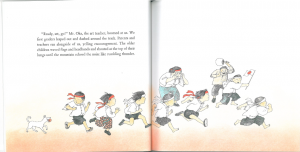
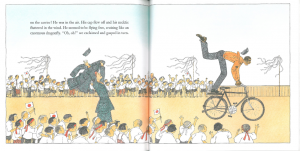






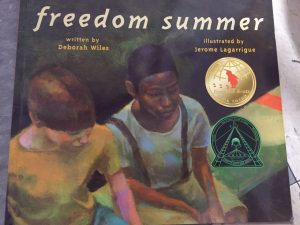
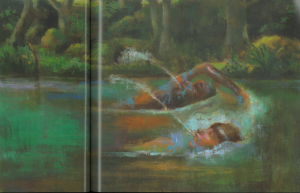

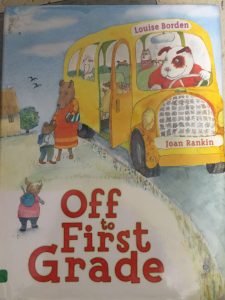
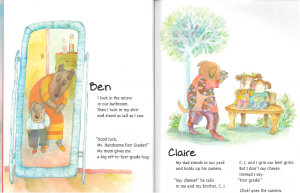
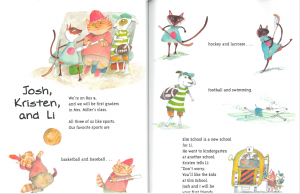
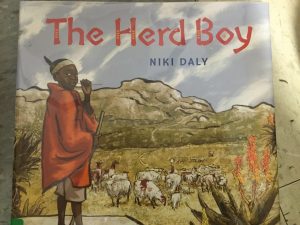
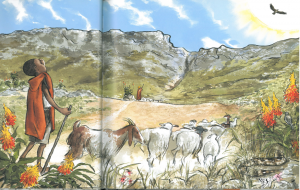
 Take Me Out to The Yakyu is a story about a boy who loves baseball in American and Japan. Through out the story he explains his favorite part about baseball in both countries. I believe that this text would be considered a window because not a lot of people have the opportunity to get the same experiences as the boy in the story so they are unable to connect on a personal level. This text can also be considered a mirror since baseball is a big part of American culture. Although Americans are unable to connect with the Japanese baseball games, they both are the same sport. So if an American or Japanese reader picked up with book they would have the opportunity to connect with it. I really love how this text displays culture. It showed both American and Japanese culture equally and I actually learned some new things about Japanese culture from this book. The images are the main thing that really shows the different culture. On all the left pages there are images of what the boy does at American baseball games and on all the right pages it is an image of what the boy does at Japanese baseball games. So for example on page 10 he is talking about the food he gets at the games. On the left side there is a picture of a hot dog and peanuts, on the right side there is a picture of soba noodles and edamame. The images are full of color and have a lot of detail, and the text mirrors the pictures perfectly which helps describe what is going on in the culture one might not know well. One of my favorite things about the text is that on each page they have American sayings like fastball then on the opposite page they have the Japanese version of that saying. I never expected to learn a couple words in a different language from a children’s book. The text really shows two different cultures and that it is okay to have two different things part of your life. I also think that this text does a good job at showing that activities may not be as different as we think in other cultures. In both countries they are playing the same sport with the same rules. The only difference is the culture that is surrounding the game. I really enjoyed this text and I think it would be a great book to use in the classroom to show that culture can make people different and that it is important to have a good understanding of culture and that its okay to be different.
Take Me Out to The Yakyu is a story about a boy who loves baseball in American and Japan. Through out the story he explains his favorite part about baseball in both countries. I believe that this text would be considered a window because not a lot of people have the opportunity to get the same experiences as the boy in the story so they are unable to connect on a personal level. This text can also be considered a mirror since baseball is a big part of American culture. Although Americans are unable to connect with the Japanese baseball games, they both are the same sport. So if an American or Japanese reader picked up with book they would have the opportunity to connect with it. I really love how this text displays culture. It showed both American and Japanese culture equally and I actually learned some new things about Japanese culture from this book. The images are the main thing that really shows the different culture. On all the left pages there are images of what the boy does at American baseball games and on all the right pages it is an image of what the boy does at Japanese baseball games. So for example on page 10 he is talking about the food he gets at the games. On the left side there is a picture of a hot dog and peanuts, on the right side there is a picture of soba noodles and edamame. The images are full of color and have a lot of detail, and the text mirrors the pictures perfectly which helps describe what is going on in the culture one might not know well. One of my favorite things about the text is that on each page they have American sayings like fastball then on the opposite page they have the Japanese version of that saying. I never expected to learn a couple words in a different language from a children’s book. The text really shows two different cultures and that it is okay to have two different things part of your life. I also think that this text does a good job at showing that activities may not be as different as we think in other cultures. In both countries they are playing the same sport with the same rules. The only difference is the culture that is surrounding the game. I really enjoyed this text and I think it would be a great book to use in the classroom to show that culture can make people different and that it is important to have a good understanding of culture and that its okay to be different.